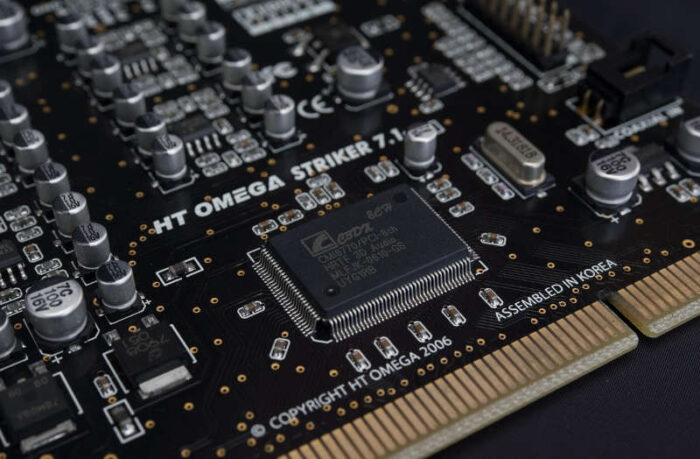What good is having software freedom if the hardware makers are holding you hostage? Marco Fioretti explains… with solutions.

People can say as much as they want about software eating the world, but software wouldn’t exist without hardware that runs it, because what really makes the modern world possible is microelectronics, not source code. Europe knows this, and has grown increasingly conscious that it makes too few microchips domestically, and that this is a serious situation.
In 2021, COVID-19 and US-China showdowns caused a severe, albeit totally unnecessary chip shortage in European car plants. Among the consequences, there were calls to break free from extra-European microelectronics trade wars and official searches for EU “chips champions.”
One year later, attempted acquisitions by Chinese companies of chip factories in the UK and Germany were blocked or reversed by governments. In June 2023, the European Commission launched a “Project of Common European Interest” to support research, innovation, and industrial deployment of microelectronics and communication technologies. Three months later, the European Commission and Parliament issued the European Chips Act, to foster the resilience of the EU’s semiconductor ecosystem and “help achieve both the digital and green transition” across Europe.
This year, less than a month ago several European chip makers and semiconductor supply chain firms called on the European Commission to also support European chip design, materials, and equipment with a Chips Act 2.0.
This is all well and good, but will it be enough? If you ask me no, unless it at least lies on the three pillars outlined below.
First: Real Unity
The EU as a block is half a billion people with (besides the “glue that holds the worldwide chip business together“) still enough money and soft power to be relevant.
Twenty-seven states acting separately, with all but one having a GDP smaller than California, may instead find themselves doing just the “ass kissing” that 47 is bragging about, and nothing more, on microelectronics and any other issue — as my own Prime Minister is trying hard to find out.
Second: Smallness
If you are losing at a game, change the game, said Gregory Benford. By far the best way for the EU to decrease its dependence on foreign microelectronics is to make its needs smaller. There are huge amounts of chips that Europe may do without to reduce its strategic weakness, without real impacts on citizens safety, public health and actual quality of life:
- AI? Sure, let’s do it, just not the US way.
- Cars? Make Automobiles Good Again! That is, make or import cars without:
- seats that warm only when you pay
- “infotainment” systems and “smart” services that will never be as good and customizable as the smartphones every driver already owns
- expiration dates that shouldn’t exist
- and so much other crap that should have never entered cars in the first place.
I really, really hope that Europe reboots the great small cars of the 1980s instead, or just tells China how to make them.
- “Smart” homes, appliances and most other “smart” consumer products? Nah. Unrepairable e-waste like fridges that scold their owners, water bottles that nag you to drink, toothbrushes that need rebooting, or home appliances with LLMs built in would just make the EU’s microelectronics dependencies bigger, for almost nothing worthwhile in return.
Just tax or tariff all this junk to oblivion and (besides the positive effects on people’s mental health and personal debt) the EU’s microelectronics independence becomes much easier to reach.
Bonus tip to EU regulators: do attend CES, it’s an excellent way to discover how many chips aren’t needed.
Third, Openness From Top to Bottom
The third weapon is all-around openness, including open hardware, really transparent supply chains, and openness to new strategic partnerships.
Open Hardware should be obvious, as the best way there is to reduce e-waste and break free of intellectual property shackles that, regardless of independence, prevent real innovation. Really transparent supply chains are sorely needed, again regardless of independence, to avoid irrational decisions about tariffs, smartphones going the way of Hezbollah pagers, fake, faulty microchips inside every product, and stuff like backdoors in patient monitors that leak highly sensitive personal data, or allow reconfigurations that may harm patients.
Finally, partnerships between the EU (not its single states) and other countries. Besides the obvious China option, there may be interesting opportunities with both India and Taiwan. Regional microprocessors seems a necessity these days, and India seems ahead on this front, thanks to its official recognition of and robust support for — since at least 2022 — open-source RISC-V for establishing robust chip design ecosystems.
Taiwan (which, see above, depends on “Made in EU” tech) is equally interesting because it’s stuck, just like the EU, between:
- a China that turned the chip foundries Taiwanese firms set up in China into the biggest rivals of those same firms
- and a US administration that, besides tariffs on imported microchips, wants to fine Taiwan Semiconductor Manufacturing Company a billion dollars because its chips ended up in Huawei products. Hmm, what did I say about transparent supply chains?
Am I daydreaming? Likely, considering how powerful the US is. Much of this stuff could happen only if there were a serious, sustained effort from the US to make it happen. Hey, wait…

Marco Fioretti is an aspiring polymath and idealist without illusions based in Rome, Italy. Marco met Linux, Free as in Freedom Software, and the Web pre-1.0 back in the ’90s while working as an ASIC/FPGA designer in Italy, Sweden, and Silicon Valley. This led to tech writing, including but not limited to hundreds of Free/Open Source tutorials. Over time, this odd combination of experiences has made Marco think way too much about the intersection of tech, ethics, and common sense, turning him into an independent scholar of “Human/digital studies” who yearns for a world with less, but much better, much more open and much more sensible tech than we have today.





One of the things you need to look at, is the raw materials needed for the tech, which is why Ukraine is such a target for both Russia and US. Besides “just being the right thing to do”, Europe (not just the EU) should step in and not only defend Ukraine, but eliminate the threat of it ever happening again. Ukraine is one of us (europeans!)
It is important that the governments in Europe back the development of tech, and it is of the up most importance to start with the “dumb citizens” who don’t care where their operating system, or apps are powered from, and don’t care about their data and identity being used for making billions in currency without them understanding. These “dumb citizens” are the ones with the power, because there are so many of them that they make things popular and therefore make things desirable. If you can sell a new mobile OS which has easy access to a vast array of apps, or a desktop OS which is stable and easy to play games, view porn and have video conferences on, then you can win the masses.
The little groups who think generating an EU based Linux distro, or German+french backed cloud-based document portal is going to change things…. these are the ones who can make the tech happen, but will not be the ones who make it popular and successful without backing!